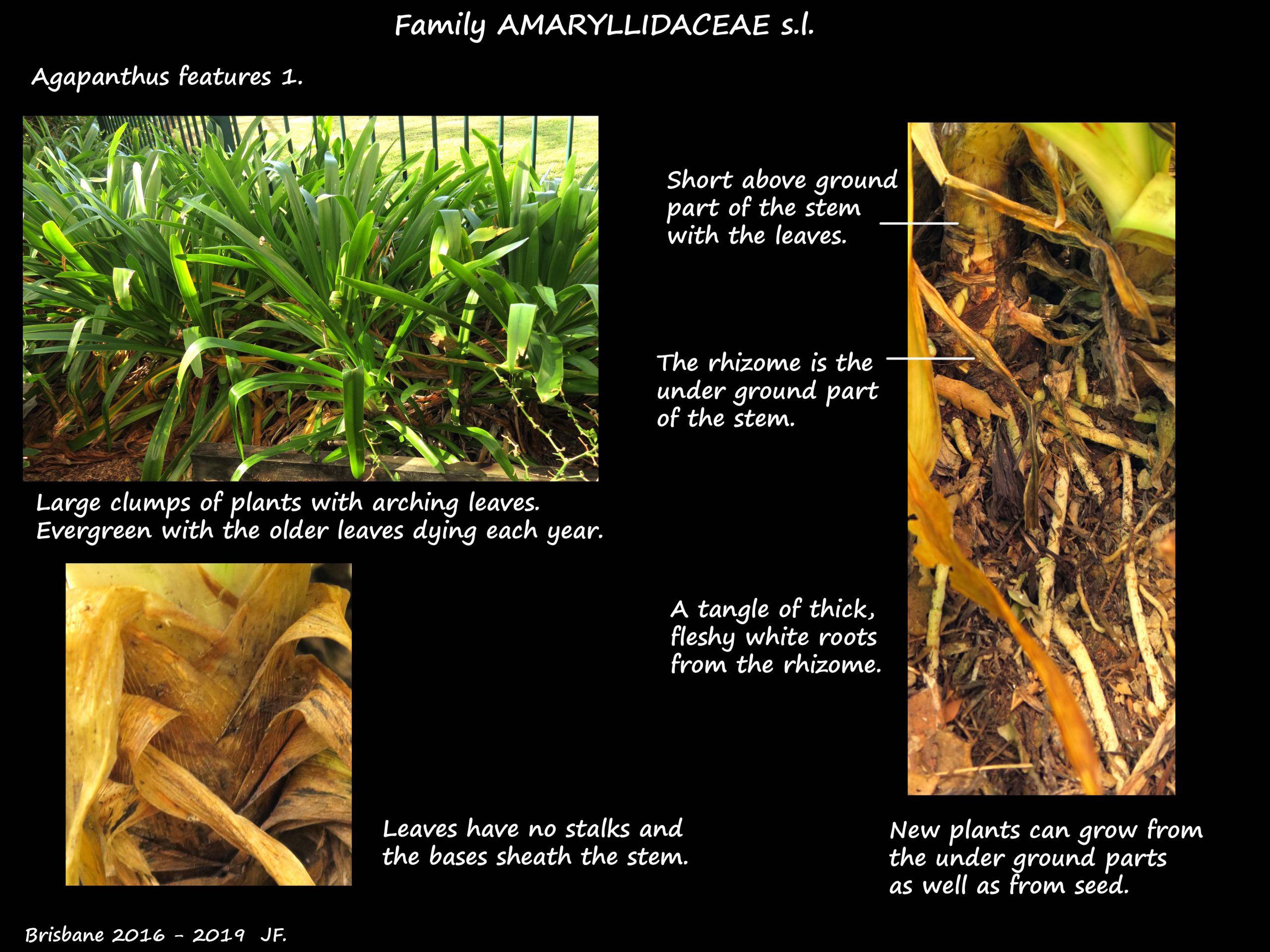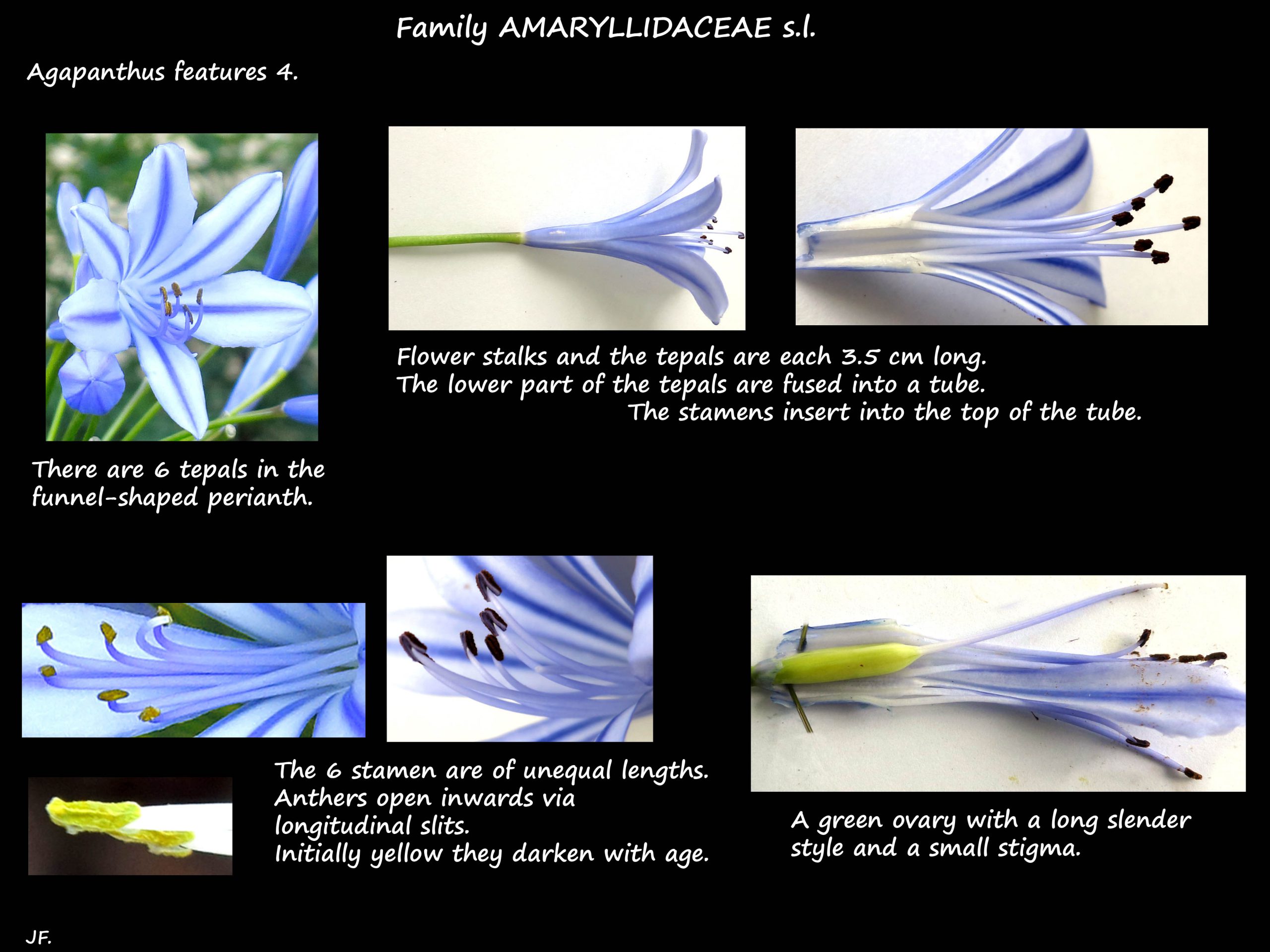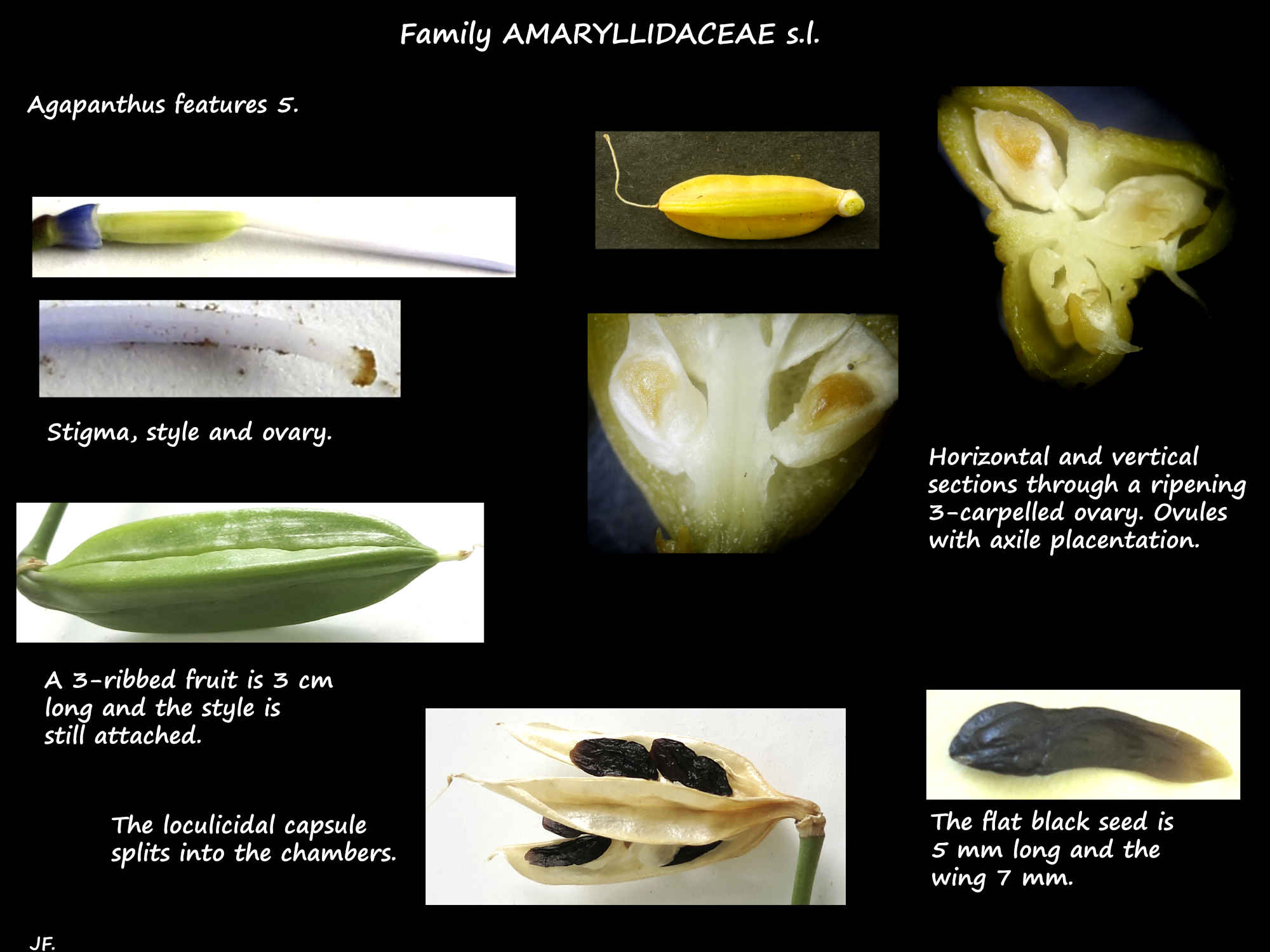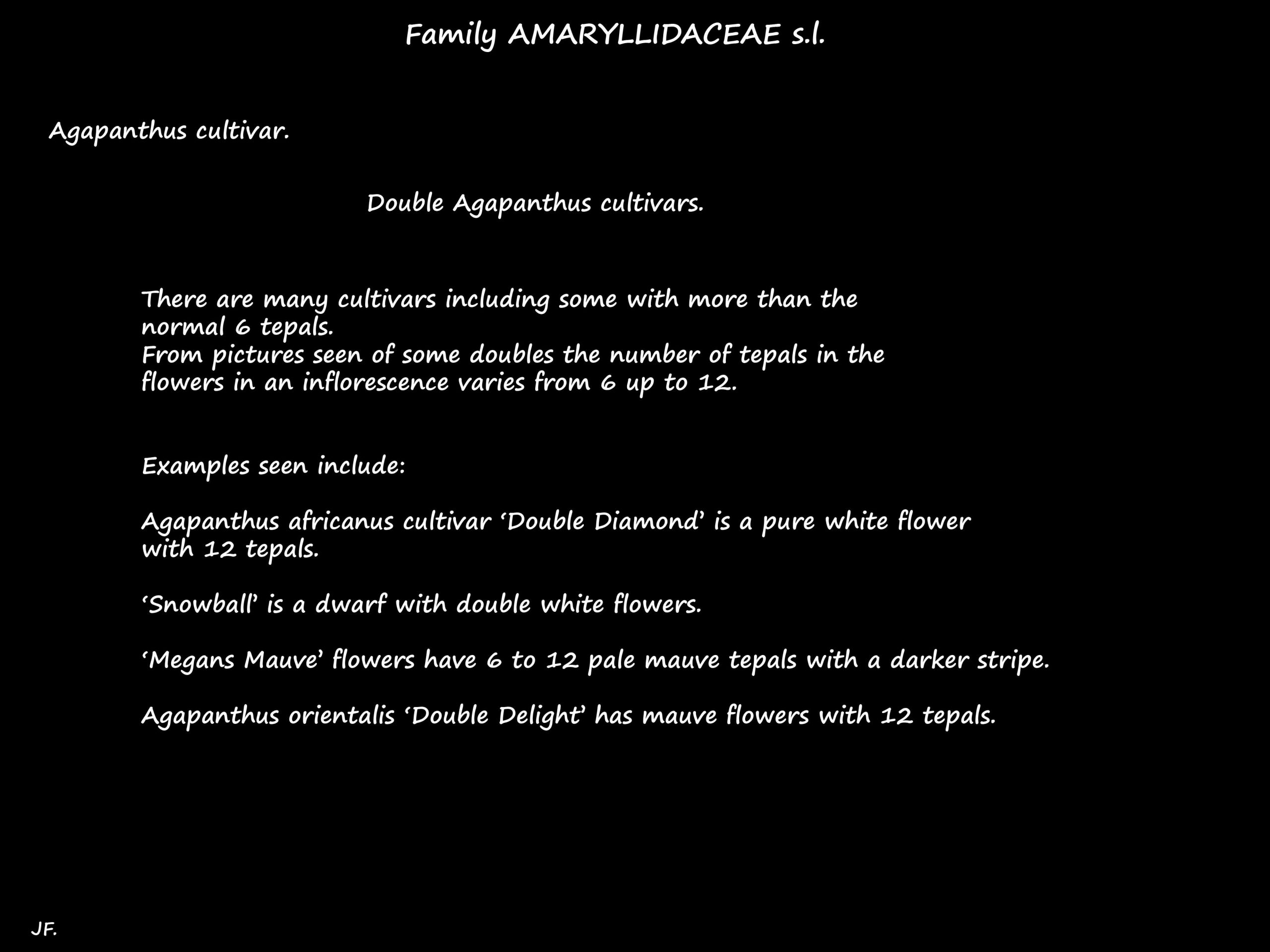Agapanthus sp.
Family Amaryllidaceae s.l.
With the many changes in classification the genus Agapanthus is still seen with the Liliaceae
or the old families of Alliaceae or Amaryllidaceae.
The AGP4 puts it in the subfamily Agapanthoideae (the old family Agapanthaceae) of the loosely
defined family Amaryllidaceae s.l.
The South African Agapanthus is the only genus with 6 to 10 species and sub-species although some
regard them all as a single variable species.
The type species is Agapanthus africanus.
Common names include African lily, blue lily and lily-of-the-Nile.
A widely grown garden plant it has become naturalised in Australia and is an environmental weed in some areas.
All parts of the plant are an irritant poison.
A perennial herb that forms large clumps.
The rhizomes (underground stems) have thick, fleshy white roots.
Plant parts have a slimy sap.
The up to 20 shiny, dark green basal leaves are in 2 ranks.
They have no stalks and their bases sheath the very short above ground part of the stem.
Some are deciduous but most are evergreen with some outer leaves dying each year.
The strap-like, curved leaves are 20 to 80 cm long and 2 to 6 cm wide.
Veins are parallel.
Inflorescences, of up to 100 flowers in an umbel-like cluster are on a leafless stem (a scape).
The flower head can be up to 15 cm across.
The hollow, green, cylindrical stem can be up to 1 or 2 m high.
The buds are enclosed in 2 large, thin bracts which fall when the flowers open.
The individual, bisexual flowers are on 5 to12 cm long stalks.
The funnel or bell-shaped perianth has 6 tepals up to 6 cm long.
The tepal bases are fused for about 2 cm.
Flowers are shades of blue or mauve plus white, with or without stripes.
The 6 stamens are up to 45 mm long with yellow anthers.
The superior ovary consists of 3 carpels with 3 locules.
The hollow style supports the globular stigma.
The fruit is a 3-sided capsule up to 5 cm long that ripens from green to grey-brown.
The numerous black seeds are flat with a wing at one end.
The species hybridise easily and there are many cultivars.
A. africanus and A. praecox subsp. orientalis are seen in Australia.
Most garden plants are cultivars or hybrids of Agapanthus praecox subsp. orientalis.
Cultivars include forms with variegated leaves, dwarfs plants and some doubles.
J.F.











